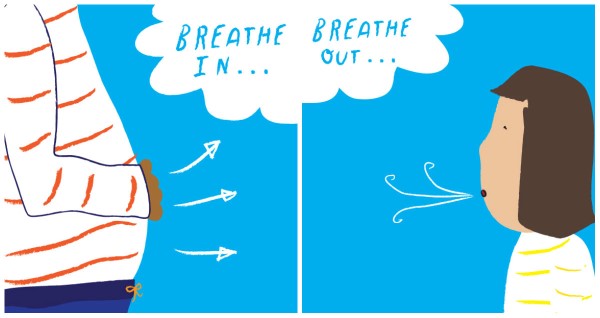Children at times stop mid-sentence with their mouth open searching for an elusive word. It is perfectly normal if this happens occasionally, but if this happens too often, it could be a sign of stammering or stuttering. Stammering or stuttering is a common speech-related problem among children. Around 10% of the children stammer, which reduces as they grow up, and only 25% of them suffer from a permanent stammer.
Parents should be observant, and if they notice that the stammer is not reducing but is increasing, they should consult a Speech therapist or a Speech-Language Pathologist for confirmation and guidance. Speech therapy for stammering is recommended for its benefits.
Table of Contents
- What Is Stammering?
- What Are The Symptoms Of Stuttering Or Stammering?
- What Causes Stammering in Children?
- At What Age Should You Worry About Stammering in Children?
- Is There a Cure for Stammering?
- Is Speech Therapy for Stammering Effective?
- What Are the Speech Therapy Exercises for stammering?
- What Causes Stammering in Adults?
- Can Adults Benefit From Speech Therapy?
What Is Stammering?
Stammering is a speech disorder affecting fluency or speech communication, as it obstructs the normal flow of speech. Globally, more than 70 million people suffer from stammering or stuttering. Males are at four time’s higher risk than females.
What Are The Symptoms Of Stuttering Or Stammering?
Children suffering from stuttering or stammering display one of the following patterns
Repetition
There is an interruption in the speech by repetition or repeating the same sound or word again and again, for example “and…and…and I wanted to know”. Also the repetition of the same syllable as “C..C..C…Come h..h..here”.
Prolongation
The person suffering from stammering tends to prolong some words; for example, “Ssssssshear ssummer is beautiful.”
Stoppages or Blockages
In this case, the person’s mouth and facial muscles form to speak the word, but others do not hear any word or sound.
What Are The Other Symptoms of Stuttering or Stammering?
- Additional body movements like shifting legs, body, change in posture, clenching of fists and building of muscle tension around the mouth and face as the child tries to speak. The child avoids looking directly while speaking.
- Change in breathing; the breathing will become irregular. The child will either try to hold his breath or take a deep breath
- Some children realise and immediately switch words or use another word
- Twitching of the facial muscles and rapid blinking of eyes is another indicator
What Causes Stammering in Children?

According to Medical science, there is no single or one reason. Different reasons and situations can affect people differently as the stammering pattern for all are not the same. Let us explore some of the reasons which can cause stammering in children.
Is Stammering Hereditary?
Studies confirm that stammering is hereditary and genetics do play an important role. In most cases, a close family member has a stammering problem.
Is Stammering Connected To Delayed Speech Development?
Experts have found a strong link between stammering and other speech related problems in children. Chances of a child stammering are more if he or she also has other speech problems. In this case, it hampers the child’s verbal delivery due to the already delayed speech development. This type of stammer is also known as Developmental Stammering.
What Is Neurogenic Stammering?
Neurogenic Stammering means stammering or stuttering caused by defects or problems in the nervous system. The causes are as follows:
- A stroke or a physical injury to the head affecting the brain
- A heart attack or a blockage stopping the flow of blood to the head
- Tumour in the region of the brain
- Meningitis is also one of the reasons
Does Anxiety and Stress Cause Stammering?
At one time, medical science believed that Psychogenic factors or anxiety and stress were the primary cause. Recent studies have shown that they are not the primary cause but do play an important role and is a trigger. This is also known as Psychogenic stammering.
Recent studies have shown that in some cases, the brain processes speech in a slightly different manner than in people with do not stammer.
Though some children may stammer, but their intelligence or intellectual capabilities are not below others in any way compared to those who do not stammer. Their inability to speak fluently makes them self-conscious, withdrawn and shy fearing embarrassment.
At What Age Should You Worry About Stammering in Children?
Children normally stammer from age one to five years. Interruptions in speech can be irregular and may disappear at times. If the child does not stammer for days together and then stammers a little, it could be excitement or a new learning experience. But if on an average a child stammers more than 10%, it is advisable to consult a Speech therapist.
Is There a Cure for Stammering?
There are various methods to treat or cure stammering, however the benefits of Speech therapy for stammering are much higher than the other treatments.
The cures for stammering are:
- Speech Therapy for Stammering
- CBT or Cognitive Behavioural Therapy
- Using Electronic Feedback Devices
- Medication
- Parent-Child Interaction
Is Speech Therapy for Stammering Effective?
Speech therapy for stammering in children is the most effective treatment. Once the diagnosis of stammering is confirmed, start regular speech therapy exercises. A speech therapist can cure stammering in children as well as adults.
Share the child’s medical history with the speech therapist to enable them to understand the case better. Once the speech therapist is familiar with the child’s medical history, he or she will start with the speech therapy exercises.
The speech therapy exercises help in strengthening the organs responsible for speech. Breathing exercises are also an important part of the therapy. The exercises help in strengthening the following parts responsible for speech:
- The tongue
- Jaws
- Lips and facial muscles
- Lungs
- The windpipe or the trachea
What Are the Speech Therapy Exercises for Stammering?
The speech therapist will customise the exercises as all cases of stammering are not identical. Some of the common exercises are as under:
Strengthening Of The Tongue And Jaws
The child should keep the mouth open and roll back the tongue. The tongue should touch the roof of the mouth towards the back as close to the throat as possible.
Now roll the tongue out and stretch it in the front, the tongue should come out of the mouth and try to reach the chin. Exercising daily strengthens the tongue. Keeping the mouth open for the tongue exercises also helps to strengthen the jaw muscles.
The Straw Speech Therapy Technique
Drinking through or sucking is a helpful speech therapy exercise. The sucking action keeps the tongue stationed throughout the sucking procedure. This helps in tongue control.
The Pause And Speak Speech Therapy Technique
The child should pause after every two to three words in a pre-decided manner. This gives them a better speech control and helps in reducing stammering.
Breathing Exercises To Reduce Stammering

Breathing exercises are very important. Proper rhythmic breathing technique helps in strengthening the lungs and draw in more oxygen which helps the brain. Use the stomach for deep breathing exercises and not the chest.
Yoga exercises are beneficial for breathing techniques and strengthening the muscles involved.
Vowel Pronouncing Technique
The child should pronounce all the vowels from A, E, to U loudly and clearly. This helps to exercise the tongue as well as the facial muscles.
Slow Speaking Exercise
Most children stammer as they tend to speak fast. The child should stand in front of the mirror and speak slowly. This helps in better coordination between the tongue and the brain due to the audio-visual feedback received by looking in the mirror.
The Reading Exercise Technique
The child should read aloud slowly and pronounce each word in a relaxed atmosphere. It takes away the fear and anxiety of mispronunciation. Continuous practice will improve communication skills.
Selection of Words
Some children stammer on particular words, and these words become a trigger for stammering. The speech therapist can help them overcome the fear of using these trigger words, or the child can avoid these words.
How Does CBT or Cognitive Behavioural Therapy Cure Stammering
Cognitive Behavioural Therapy is a treatment for many behavioural issues and not only stammering. The therapist counsels the child and changes their approach or behaviour. In the case of stammering CBT helps to lower anxiety and social phobias.
CBT is helpful if the stammer is minor and due to anxiety, stress build-up or anything psychological in nature. It does not help much if it is due to physical injuries.
How Do Use of Electronic Feedback Devices Cure Stammering
The Delayed Auditory Feedback device is an electronic device. It consists of a microphone, a set of headphones and the electronic device with controls. The child speaks into the microphone and hears the speech back into his ears through the headphones with a slight delay. The use of electronic DAF or Delayed Auditory Feedback device is based on the theory that if a child speaks along with others or in chorus, it helps in reducing stammer. In this case, the child speaks along with the DAF and not another person. This effect is the choral effect.
Do Medicines Help In Reducing Stammering?
There are no medicines formulated to cure stammering, most doctors prescribe anti-anxiety and anti-depressant drugs. These medicines work along with other therapy methods for curing stammering. Medicines are not a direct treatment or a cure for stammering. These drugs are only useful when stress or anxiety levels are high and are not prescribed throughout the treatment, which may last for a few months.
Advantages of Parent-Child Interaction in Reducing Stammering
The first step in therapy starts at home. Parents should change the way they speak to their child. Some simple changes can help the child come out of the shell and not be conscious of the speech disorder.
- Parents should speak slowly and clearly in a pleasing tone
- Encourage the child to speak, and parents should listen attentively
- Make eye contact at all times while talking
- Do not interrupt or fill in words while the child is talking , give them time to finish speaking
- Talk and interact as much as possible. Discuss games, happenings at school or friends, stories etc.
- Maintain a happy and relaxed family atmosphere and parents should not argue in front of the children
- Do not correct the child or ask them to speak clearly
- Use small sentences to communicate
What Causes Stammering in Adults?
Stammering in adults, also known as Adult Dysfluency can occur at any age. The primary reasons are:
Spastic Dysphonia in Adults
Adults suffering from Spastic Dysphonia have a blockage or an involuntary muscle movement of the larynx or the voice box. Spastic Dysphonia can also be caused by an injury to the larynx or a severe cold. This can also happen in the middle ages.
Neurogenic Stammering in Adults
Similar to the children, neurogenic stammering can happen in adults as well, most of the reasons are common.
- A stroke or a physical injury to the head affecting the brain
- A heart attack or a blockage stopping the flow of blood to the head
- Tumour in the region of the brain
- Diseases such as Parkinson’s
- Psychogenic Stammering In Adults
Working adults too suffer from psychogenic stammering. The high levels of work stress and inability to cope with other demands in real life can be a trigger in adults.
Can Adults Benefit From Speech Therapy?

Elders and adults also benefit from speech therapy. In the case of adults, the treatment focuses on the underlying psychological reasons. Treating the underlying issues is important unless the stammer is due to a physical accident. Adults should not hesitate to start treatment as the stammer will affect their professional growth. Withdrawing from active social life due to stammer can result in depression.
Adults can also join self-help groups on popular social media platforms. Support groups are very helpful as the group members discuss practical experiences and help each other.
There is no miracle cure for stammering. Though all the above suggested therapies help, the benefits of speech therapy for stammering are universally proven. Teletherapy or Online Speech therapy for stammering is also possible within the comforts on one’s house.
